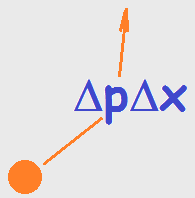What Heisenberg Knew

Heisenberg knew that, at the quantum level, we cannot know everything, at least not all at once. Students explore uncertainties in measurements of complimentary variables to find this out for themselves.
Werner Heisenberg proposed the uncertainty principle, one of the foundational concepts of quantum physics, in 1927. Heisenberg proposed that there are pairs of complementary variables which are fundamental quantities of nature. For complementary variables, the greater the precision in the measurement of one variable, the less the precision in the measurement of the other variable. This give-and-take is not from experimental systematics but is part of the very nature of the act of measuring the variables. The best known and most important of these complementary pairs are momentum-position and energy-time. This activity takes an empirical approach to these pairs. Students plot measurements of uncertainty in one variable, e.g., momentum (Δp), as a function of uncertainty in the other variable, e.g., position (Δx), and use these plots to discover relationships between the variables.
Enrichment: A Colab file is provided for students who code. We recommend that teachers make a copy, then edit the code before sharing with students. It is important provide necessary scaffolding for your students.
This Colab notebook was prepared by Robert Baker.
